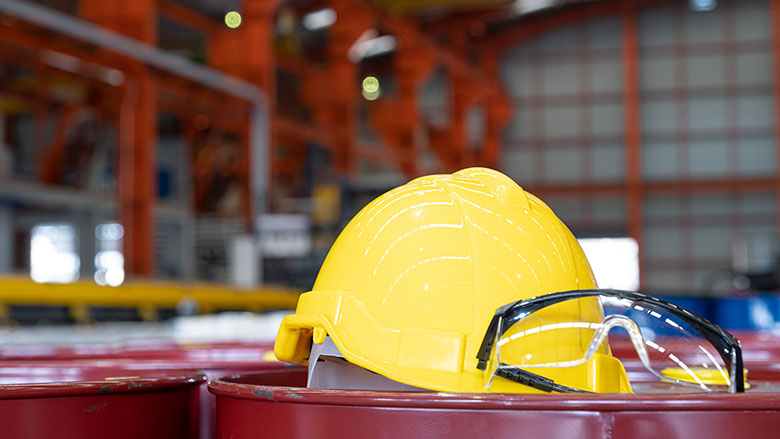New year, new attitude on safety
Best-in-class tips gleaned from experience

Stock photo and footage/ iStock / Getty Images Plus via Getty Images
It’s the start of a new year, and time for your organization to consider a new approach to safety programs and procedures. I have been “doing” safety for over 40 years, working with construction clients for the last 20 years. The first thing my contacts always ask is “What’s new?” or “What else can I do?”
Below you will find some best-in-class information gleaned from a number of companies over multiple states. Some are policies, some are physical changes, and some are program changes. While most of the following are not new, I believe that, put-together, they can help an organization become more proactive when it comes to safety efforts. Not all changes may fit within your organization, but if you choose the ones that most apply to your particular situation, you can potentially reduce future accidents and injuries.
Company policies
- Have a written safety program, as well as a procedure for review. At a minimum, an annual review should take place; with that review, a revision page should be added at the front of the program, with a list of all changes made and the date they were made.
- Engage a full supervisor accountability program based on activities completed. (i.e.: accident investigations, regular employee safety training, enforcement of PPE usage, etc.)
- Regular behavioral safety audits by all supervisors and, if possible, hourly employees.
- Implement a full drug screening program for post-offer of employment, post-accident, for-cause, and random testing.
- Institute a formal return-to-work policy for injured employees.
- Employee stand-down meetings after each accident.
- Weekly safety toolbox talks.
- Require a formal matrix of skills to be an exceptional lead or supervisor, including all of the prior training necessary. There should also be a clear direction of what is needed to become a lead and/or supervisor.
- Use a caution card to record near misses/incentivize use of the cards.
- Have a safety lunch for every job that has no recordables for the prior month.
- Create purchasing ability for each job site to order/purchase required PPE. This makes it so that the main office/warehouse does not need to store and distribute these items, saving time and putting the correct PPE in the hands of those that need it more urgently.
- Require the wearing of all necessary PPE on job sites, with training of all employees in proper usage.
- Have an emergency rescue plan in place before starting any work in lifts, at heights, in confined spaces and in all excavations.
- Have a written traffic control plan for the internal job site (speed limit for lulls, etc.) and for any work located near and around public roadways.
- Employee travel should be restricted to normal working hours if possible.
- Including driving time, no workdays should extend for longer than 12 hours.
- Construction projects of 5 days or more require a project-specific safety plan.
- Perform daily safety / planning meetings with all supervisors and employees. This should include formal JSA in writing and signed off on.
Employees
- Consider using an alert meter. This is an attention testing app that tests for employee alertness and work readiness.
- Train in CPR/First Aid annually, as required for all electrical workers by NFPA 70E.
- Complete an MVR check on all new employees.
- Provide defensive driver training to all new employees and all employees annually.
- All supervisors should have completed at least an OSHA 30-hour.
- All hourly employees should have completed at least an OSHA-10 hour.
- All new-hires should attend a formal safety orientation program.
- If possible, bring all recent new hires back into the office after 2 weeks to 30 days on the job, and redo all of the original safety training. Note: employees rarely remember much of the first 2 or 3 days at a new company with all of the information that is pushed at them; retention of that institutional knowledge increases to about 85% with this method.
- On the first day of starting a new construction job, all employees should drive to the chosen medical center so they all know where it is at and how to get there. This is especially important for rural job sites.
- Do not allow employees to operate boom or scissor lifts for 1 week before vacation and until 2 days after returning from vacation.
- Provide new hires with different color safety hats for the first 2 weeks of employment; assign to a senior employee until they can prove they understand the job and all safety requirements.
- Provide a new employee orientation at each job site with a tour.
- Have at least 2 employees on every job site at all times.
- Provide an anonymous way for employees to voice complaints.
- Provide a way for employees to make safety suggestions.
Hazards
- Take pictures of job site walk-throughs for use as documentation of issues that need correcting and to create training materials for the future. Take pictures of corrected hazards also.
- For any road/street work, contact the Local/State Police to notify them that road work is about to begin.
- Use a program like I-Auditor or Safety Culture etc. to complete job site inspections. Take pictures of hazards and attach to reports.
- Use a ladder shingle lift to move materials where elevators are not yet installed. Eliminate the carrying of materials by hand on stairs as much as possible.
- Pre-plan material placement as much as possible to reduce manual material handling and material movement.
- Make good housekeeping a priority on all phases of each job site.
- Go above the use of just safety glasses when working in dusty areas. Glasses with foam edging can prevent eye injuries.
- Consider if a confined space permit is required. If this cannot be done, always require air sampling and an attendant while space is occupied. Full retrieval equipment should be present for all entries.
- Air testing equipment should be recalibrated every 30 days, and a bump test should be done daily before each use.
- All hydraulic lifts require a fire extinguisher on board.
- For forklifts, in warehouses and storage areas, equip with blue light back-up system.
- Add a sign with NFPA 70E approach distances near the controls of all booms, lifts, and cranes.
- Install reminder stickers to dashboard and near boom controls of any crane type equipment to verify overhead power line location.
- Booms should have an alarm system to verify boom is in the cradle prior to moving a mobile crane.
- Deliver trench protection equipment to job sites at least one day prior to starting job. This should include boxes, shoring materials, access ladders, air monitoring equipment and water removal pumps. (Access ladders is the item that I see missing the most when doing job site visits.)
- Fall protection should be required of all employees working over 6’ off the ground.
- All openings with a fall potential should be guarded.
- Loading docks should be guarded to prevent employees from falling off of them.
- When possible, alternatives to ladders should be identified in the pre-planning phase of work. Use stairway systems when possible.
Communication
For safety equipment recalls or any emergency communication to all employees: have a group text for immediate dissemination. (Human nature is to stop and look at all text messages. Emails often are ignored.)
When any delivery vehicle comes on site, a spotter person should be used. Have the delivery vehicle stop and have the spotter and driver confirm hand signals and rules.
Have a form of communication available for field employees to provide feedback to management.
Stress the need for personal accountability. Each person is responsible for themselves and their safety first; each employee is also responsible for the safety of their coworkers.
Auto
- Consider using Lifesaver — this is a phone app that prevents texting and incoming calls when vehicle is moving over 10 MPH.
- Implement GPS — Units in all vehicles with a program that provides ongoing feedback to all drivers. If properly implemented, can usually decrease claims by 20 to 30%.
- Driver incentive for driver-of-the-month, based on GPS scores.
- Use an MVR monitoring program — there are nationwide companies that will monitor MVR’s of all drivers and report to their companies whenever they receive a moving violation.
- Distribute a written cell phone usage policy. Suggestions include: No texting while driving. Pull over to carry on cell phone calls. Use Bluetooth if possible.
- 100% seat belt policy.
- For vehicle inspections: make a challenge with maintenance putting a sticker somewhere on the vehicles to see if drivers report finding the sticker, it shows the employee is doing a proper inspection when they find the sticker, especially DOT vehicles.
In conclusion
If you know of other best-in-class suggestions for safety, please be sure to share them. While having a proper safety program can certainly be a competitive advantage, keeping all workers from harm is a moral obligation.
The information provided in this article does not, and is not intended to, constitute legal advice; instead, all information, content, and materials contained in this article are for general informational purposes only.
Looking for a reprint of this article?
From high-res PDFs to custom plaques, order your copy today!








.jpg?t=1721257160)